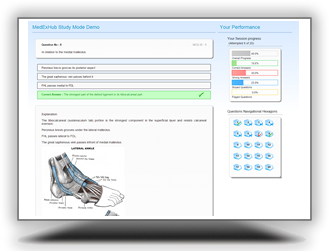The pathogenicity of Mycobacterium tuberculosis is caused by which of the following mechanisms?
A: Correct Answer : Is a hypersensitivity response to products of the tuberculosis bacteria.
B: Is due to caseous necrosis.
C: Is impaired antibody response/cell mediated.
D: Is direct host cell killing by the bacillus.
Explanation:
The pathogenicity of Mycobacterium tuberculosis is caused by a hypersensitivity response to products of the tuberculosis bacteria.
The pathogenesis of tuberculosis in the previously unexposed immunocompetent person is centered on the development of a targeted cell-mediated immunity (Type IV hypersensitivity) that confers resistance to the organism and results in development of tissue hypersensitivity to tubercular antigens. The pathologic features of tuberculosis, such as caseating granulomas and cavitation, are the result of the destructive tissue hypersensitivity that is part and parcel of the host immune response. Because the effector cells for both processes are the same, the appearance of tissue hypersensitivity also signals the acquisition of immunity to the organism.
In summary, immunity to a tubercular infection is primarily mediated by TH1 cells, which stimulate macrophages to kill bacteria. Lysis of macrophages results in the formation of caseating granulomas. Mycobacterium cannot grow in this acidic, extracellular environment which is lacking in oxygen, and so the infection is controlled.



















